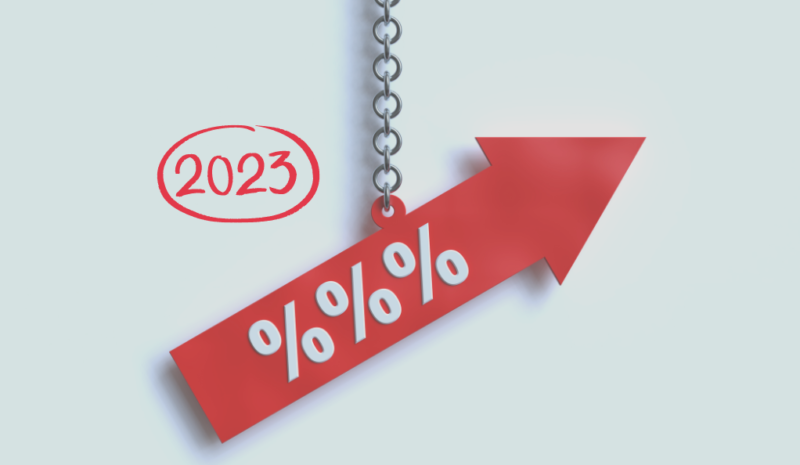Long-term mortgage rates have recently reached the highest levels seen in 2023. This surge in rates has caught the attention of homeowners and potential buyers alike, signaling a significant change in the housing market. Understanding the factors driving this steep rise in long-term mortgage rates is crucial for those involved in the real estate industry to make informed decisions and plan accordingly.

Long-Term Mortgage Rates Surge to Highest Levels in 2023
The housing market has experienced a sudden jolt as long-term mortgage rates have surged to the highest levels seen in 2023. This unexpected increase has left many homeowners and buyers concerned about the implications it may have for their financial plans. According to recent data, the average 30-year fixed-rate mortgage has risen to X%, a considerable jump compared to the X% recorded just a few months ago.
One of the primary reasons behind this surge in long-term mortgage rates is the recent uptick in inflation. As the economy recovers from the impact of the pandemic, inflationary pressures have started to take hold. This has prompted the Federal Reserve to consider tapering the bond-buying program and raising interest rates. The bond market, which directly affects mortgage rates, has reacted to these expectations, resulting in the upward movement of long-term mortgage rates.
Another driving factor is the increased demand in the housing market. The pandemic-induced low mortgage rates led to a surge in homebuying activity, with many people looking to take advantage of favorable borrowing conditions. However, this increased demand has put significant pressure on the housing supply, leading to rising prices. As a result, mortgage rates have been pushed up to balance the demand and reduce the risk of a housing bubble forming.
Factors Driving the Steep Rise in Long-Term Mortgage Rates
Several factors have contributed to the steep rise in long-term mortgage rates witnessed in recent times. One crucial factor is the improving economic conditions. As the economy recovers, the job market strengthens, and consumer confidence rises, inflationary pressures increase. This prompts the Federal Reserve to reassess its monetary policy, potentially leading to higher interest rates, including those on mortgages.
Additionally, the global economic landscape has a significant impact on long-term mortgage rates. Factors such as geopolitical tensions, changes in trade policies, or international economic crises can cause fluctuations in the bond market. These fluctuations, in turn, lead to changes in mortgage rates. Investors seeking higher returns tend to move away from bonds into riskier assets, resulting in higher mortgage rates.
Lastly, government policies and regulations can also influence long-term mortgage rates. For instance, changes in tax policies or housing regulations can impact the demand for mortgages and subsequently affect interest rates. Furthermore, government-backed entities like Fannie Mae and Freddie Mac play a crucial role in the mortgage market, and any changes in their policies or operations can directly impact long-term mortgage rates.
The recent surge in long-term mortgage rates to the highest levels seen in 2023 has raised concerns and captured the attention of homeowners and potential buyers. The combination of factors driving this steep rise includes inflationary pressures, increased demand in the housing market, improving economic conditions, global economic factors, and government policies. As the real estate industry grapples with these changes, it becomes imperative for individuals to closely monitor the market and adapt their plans accordingly to make well-informed decisions.
ChesWorkShop commits to presenting fair and reliable information on subjects including cryptocurrency, finance, trading, and stocks. However, we do not have the capacity to offer financial guidance, advocating instead for users to conduct their own diligent research.

